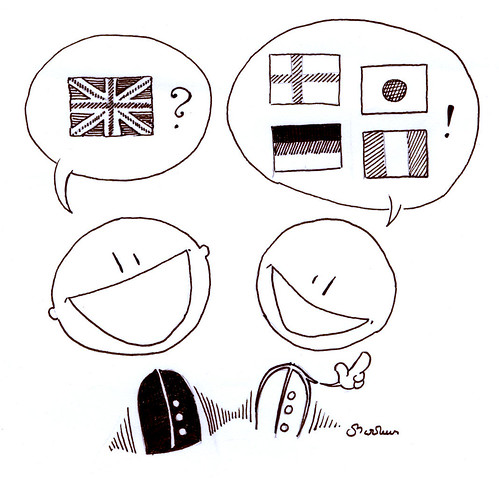Sometimes labelled as one of the hardest languages for non-native speakers to learn and master the English language can be a minefield of potential problems.
Identifying common pitfalls and learning how to avoid them is one of the key ways to improve your English skills – and here are five examples to help you:
1. Wrong ordering of adjectives
The way in which several adjectives are often used to describe a single subject in the English language can be confusing for non-native speakers at first.
There is an accepted adjective order to keep to so, when forming sentences try and stick to these guidelines to ensure you end up with sentences that follow the rules of English grammar correctly.
The ordering is as follows; articles, judgment, size, shape, age, colour, nationality and, finally, material. Don’t worry about getting these right every single time but as your language skills grow you should be looking to follow this rule.
2. Incorrect or missing articles
For many individuals trying to learn English, it can be all too easy to confuse or drop the articles in a sentence and there are a number of rules you are expected to follow in order to ensure that you have selected the right article for the right occasion.
The most important of these is the distinction between occasions when you should use ‘a’ and others when you should use ‘the.’
‘A’ is used in conjunction with non-specific, singular, countable nouns, while ‘the’ is used for specific, singular or plural nouns.
3. Repeating the subject through confused use of pronouns
Many students of the English language seem to develop a habit of repeating the subject in the sentence by using a pronoun that shouldn’t be included. For instance, many students would say, ‘my dog it is very cute,’ rather than ‘my dog is very cute.’
The unnecessary use of the pronoun ‘it’ in the first example means that the subject has been repeated twice, creating a sentence which is grammatically incorrect. Try to prevent this by paying close attention to where you place the subject in the sentence.
4. Differentiating between ‘your’ and ‘you’re’
This is a difficult pitfall when learning the English language. Though the pronunciation is exactly the same, the words mean two different things and should be used in different contexts.
‘You’re’ is a contraction of ‘you are’ and, consequently, should be followed by an event or description. On the other hand, ‘your’ means ‘belongs to you,’ and refers to a thing or trait that can be applied to you.
The indication is the apostrophe in ‘you’re,’ which identifies it as a contraction.
5. Plural nouns and possessive nouns
There can be a lot of confusion when dealing with whether a noun is plural or possessive, so it’s advisable that you have a good understanding of the distinctions between the two.
When you are trying to indicate possession of an object by someone or something, you should make use of an apostrophe (’). For instance, ‘that is the cat’s bed.’ Here we can clearly see that the bed belongs to a single cat.
If the noun is plural and an object belongs to lots of people or things, then you use the apostrophe after you have pluralised it. For instance, ‘that is the cats’ bed.’ Here the apostrophe lets us know that the bed belongs to more than one cat.
Image credit to zinjixmaggir from Flickr
Author | Written on behalf of leading language school provider, Linguarama, Professional Business English courses and other foreign language courses all across Europe/


